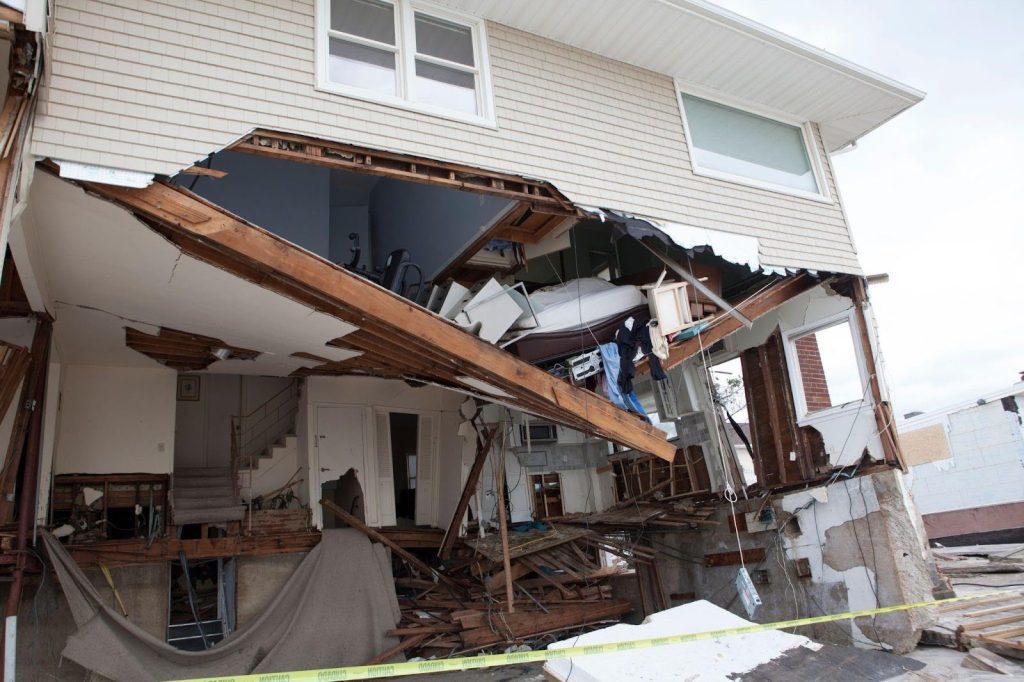Structural Damage vs. Cosmetic Damage: Understanding the Difference
When damage appears in your home — whether it’s a crack in the wall or a sagging floor — it’s easy to wonder: Is this structural or cosmetic damage? Understanding the difference is important. It impacts the safety of your home and plays a major role in repair decisions, property value, and how your insurance company handles your claim.
In this blog, we’ll break down exactly what sets structural damage apart from cosmetic issues, how to recognize warning signs, and why proper classification is so important when filing an insurance claim.
Whether you’re dealing with recent damage or want to be better prepared, knowing what to look for — and when to seek help — can make all the difference.
What is structural damage?
Structural damage refers to any harm that affects the strength, stability, or safety of a building’s main framework. Unlike cosmetic damage, which only impacts the appearance, structural damage weakens the parts of your home that keep it standing.
This includes the foundation, load-bearing walls, roof framing, support beams, and floor structures. When these critical components get compromised, the entire building becomes unsafe.
Some common examples of structural damage are wide or growing cracks in the foundation, floors that sag or slope, walls that bow or lean, and roofs that appear uneven or are pulling away from the main structure. You might also notice doors and windows that stick or won’t close properly — this often happens when the structure warps the frames.
Water leaks, termite damage, shifting soil, earthquakes, strong winds, or even poor original construction can cause structural damage.
What is cosmetic damage?
Cosmetic damage refers to minor issues that affect the look of your home but do not impact its structural strength or safety. These problems are usually surface-level and don’t threaten the stability of walls, floors, ceilings, or the foundation. Cosmetic damage is more about appearance than function and is often easier and less expensive to repair.
Common examples of cosmetic damage include small cracks in drywall, chipped paint, dents in siding, scuffed floors, and worn or cracked tiles. You might also see minor scratches on countertops, faded exterior paint, or slight discoloration from water stains that have already been fixed.
While these issues may make a home look older or less cared for, they don’t threaten the structure’s integrity.

How to tell the difference
At first glance, it’s not always easy to tell whether you’re looking at structural damage or cosmetic damage. Cracks, stains, and minor defects may appear harmless, but could signal a bigger problem. Knowing how to spot the difference will save you time and money and protect your home’s safety.
Look at the location
Where the damage appears is a big clue. If you see cracks or problems in load-bearing walls, the foundation, ceiling joints, or major beams, it’s more likely to be structural. On the other hand, damage to drywall, plaster, siding, or decorative finishes is often cosmetic.
Check the size and pattern of cracks
Small, hairline cracks in walls or ceilings — especially in straight lines — are often cosmetic and caused by normal settling or minor changes in temperature and humidity.
However, wide cracks (especially those wider than 1/4 inch), cracks that run in a stair-step pattern across bricks, or diagonal cracks from windows and door frames can be signs of serious structural movement.
Pay attention to movement.
If doors and windows are sticking, frames are warping, floors are sloping, or walls are bowing, these are strong indicators of structural damage. Minor scuffs or dents that don’t affect how things function are typically cosmetic.
Look for changes over time
Cosmetic damage often stays the same. If a crack, stain, or gap continues to grow, shift, or worsen, there’s a good chance you’re dealing with a structural issue.
How insurance treats structural vs. cosmetic damage
When filing a homeowners insurance claim, the difference between structural and cosmetic damage matters a lot. Insurance companies handle these two types of damage very differently, and knowing how they approach each may help you better prepare for the claims process.
Structural damage is typically covered
Insurance policies usually cover structural damage, especially when it’s caused by a sudden and accidental event, like a fire, storm, earthquake, or burst pipe. Structural damage affects the core strength and safety of the home, making it a priority for insurers to address.
If a covered peril causes cracks in your foundation, damage to your framing, or roof collapse, your insurance company is likely obligated to pay for repairs or rebuilding, according to the limits of your policy.
However, your claim will still need strong documentation. You’ll be required to show how the event directly caused the structural damage, and you may need expert assessments from engineers or contractors to support your case.
This is where having a public adjuster can be extremely helpful. They represent you, not the insurance company, and ensure the full extent of structural damage is properly documented and valued.
Cosmetic damage may not be covered
Cosmetic damage is trickier. Many insurance policies specifically exclude minor cosmetic issues unless they are part of a broader, covered loss.
For example, suppose a hailstorm causes small dents in your siding that don’t affect its function. In that case, your insurance company might argue that those repairs are unnecessary because they are only aesthetic.
In some cases, cosmetic damage related to a covered structural event may be included. For instance, if a major storm damages your roof structurally and you need to replace shingles, matching the shingles for appearance could be part of the claim.
But if cosmetic damage is unrelated to structural issues, like small cracks from natural settling, it likely won’t be covered.

Filing an insurance claim for structural damage
Start with a full inspection
The first step in filing a claim for structural damage is getting a professional inspection. A contractor, structural engineer, or public adjuster can assess the extent of the damage and determine if it directly relates to a covered event under your insurance policy. Insurance companies usually require expert documentation to approve a claim for structural repairs.
Document everything
Take detailed photos and videos of all visible damage. Make notes about when you first noticed the problem and any events (like a storm, earthquake, or accident) that could have caused it.
The more evidence you can provide, the stronger your claim will be. You’ll also want to keep copies of inspection reports, repair estimates, and any communication with contractors or experts.
Understand your policy
Carefully review your homeowners’ insurance policy to know what types of structural damage are covered. Most policies cover sudden and accidental damage caused by events like storms, fire, or burst pipes, but they might not cover damage from gradual wear and tear, flooding, or poor maintenance.
Understanding your policy terms will help you prepare for possible questions or pushback from the insurance company.
Be ready for pushback
Structural claims often cost insurers more, which means they may look for ways to minimize the payout. They might argue that the damage was pre-existing, caused by neglect, or is only cosmetic. That’s why expert assessments and thorough documentation are important to support your case.
Work with a public adjuster
Filing an insurance claim for structural damage can be complicated, with small mistakes costing a lot of money. A public adjuster works to ensure your damage is fully recognized and your claim is valued fairly. They can handle paperwork, gather evidence, negotiate with the insurance company, and fight for the settlement you deserve.
Why it matters
Structural damage repairs are often expensive and crucial for your home’s safety. Filing your claim properly, backed by professional support, ensures you won’t be left paying out of pocket for repairs that should be covered. Taking the time to file correctly protects your investment and peace of mind.
Hire Hudson Douglas Public Adjusters today
If you’re facing structural damage to your home, navigating the insurance process can feel overwhelming and frustrating. That’s where Hudson Douglas Public Adjusters comes in. We specialize in representing homeowners to make sure your claim is handled fairly and thoroughly.
Filing an insurance claim for structural damage requires detailed documentation, expert assessments, and strong negotiation skills. Our team has the experience, knowledge, and dedication to manage every step of the process for you, ensuring that no part of your loss is overlooked or undervalued.
When you work with Hudson Douglas, you gain an advocate who will fight for the full compensation your policy promises. We assess the true extent of the damage, prepare a strong, evidence-backed claim, and handle all communication and negotiations with your insurance company.
Our goal is to relieve your stress and restore your home without the burden of unnecessary out-of-pocket expenses.Don’t leave something as important as your home’s safety and value to chance. Trust Hudson Douglas Public Adjusters to guide you through the claims process with skill, transparency, and unwavering support. Contact us today to get started, and let us help you secure the settlement you deserve.


